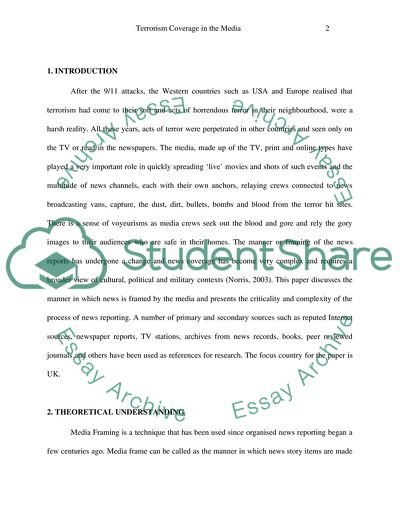Cite this document
(Demonstrating an Understanding of the Complexity of Conflict and Research Paper, n.d.)
Demonstrating an Understanding of the Complexity of Conflict and Research Paper. Retrieved from https://studentshare.org/social-science/1726381-demonstrate-an-understanding-of-the-complexity-of-conflict-and-terrorism-coverage-in-broader-cultural-political-and-military-contexts-analyse-media-coverage-of-the-major-events-relating-to-the-war-on-terrorism-the-iraq-invasion-in-a-selected-country
Demonstrating an Understanding of the Complexity of Conflict and Research Paper. Retrieved from https://studentshare.org/social-science/1726381-demonstrate-an-understanding-of-the-complexity-of-conflict-and-terrorism-coverage-in-broader-cultural-political-and-military-contexts-analyse-media-coverage-of-the-major-events-relating-to-the-war-on-terrorism-the-iraq-invasion-in-a-selected-country
(Demonstrating an Understanding of the Complexity of Conflict and Research Paper)
Demonstrating an Understanding of the Complexity of Conflict and Research Paper. https://studentshare.org/social-science/1726381-demonstrate-an-understanding-of-the-complexity-of-conflict-and-terrorism-coverage-in-broader-cultural-political-and-military-contexts-analyse-media-coverage-of-the-major-events-relating-to-the-war-on-terrorism-the-iraq-invasion-in-a-selected-country.
Demonstrating an Understanding of the Complexity of Conflict and Research Paper. https://studentshare.org/social-science/1726381-demonstrate-an-understanding-of-the-complexity-of-conflict-and-terrorism-coverage-in-broader-cultural-political-and-military-contexts-analyse-media-coverage-of-the-major-events-relating-to-the-war-on-terrorism-the-iraq-invasion-in-a-selected-country.
“Demonstrating an Understanding of the Complexity of Conflict and Research Paper”, n.d. https://studentshare.org/social-science/1726381-demonstrate-an-understanding-of-the-complexity-of-conflict-and-terrorism-coverage-in-broader-cultural-political-and-military-contexts-analyse-media-coverage-of-the-major-events-relating-to-the-war-on-terrorism-the-iraq-invasion-in-a-selected-country.


